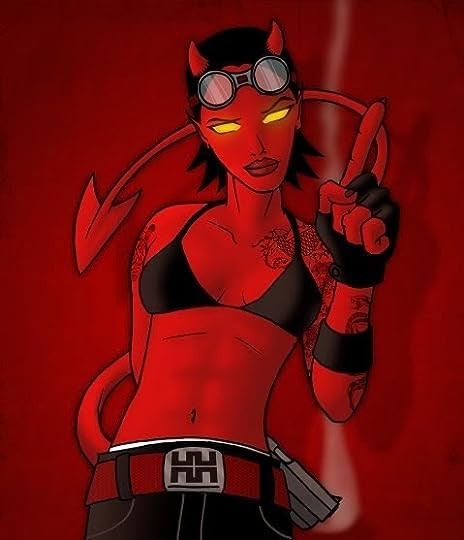The Chicago Tribune’s enthusiastic, albeit slightly pretentious, description of “A Song of Ice and Fire” as “a fantasy series for hip, smart people” might initially raise eyebrows. However, setting aside such taglines, the core truth remains: this series, and particularly A Dance of Dragons, is a monumental achievement in fantasy literature. This review delves into the intricate layers of this fifth installment, exploring its strengths, weaknesses, and the enduring appeal that keeps readers captivated.
Initial Reactions and Key Highlights
Upon finally immersing myself in A Dance of Dragons, after the separate narrative threads of A Feast for Crows, the return of beloved Point of View (POV) characters like Tyrion, Jon Snow, and Daenerys was a welcome relief. While characters like Arya, Brienne, and Jaime were missed, the anticipation of rejoining these central figures was palpable. And, of course, there was a lingering thought for Theon – poor, misguided Theon!
Tyrion’s initial chapters plunged into a familiar melancholic state, grappling with the aftermath of patricide and betrayal. This introspection, while perhaps slow-paced for some, felt narratively justified given his recent traumas.
The long-awaited demise of Janos Slynt was a moment of pure catharsis. The manner of his execution was particularly satisfying, a testament to the grim justice prevalent in Martin’s world.
The enigmatic Three-Eyed Crow, now revealed as a tree-man, presented a fascinatingly creepy mystery, deepening the mystical elements within the narrative.
The return of Theon Greyjoy, or rather, Reek, was undeniably compelling. His transformation into a broken, tortured shell of his former self is both disturbing and strangely captivating. While his past actions are reprehensible, the glimpse of the old Theon beneath the layers of Ramsay’s cruelty sparks a flicker of hope for potential redemption, or at least, a poignant resolution to his tragic arc.
Ramsay Snow’s backstory, meticulously pieced together, paints a portrait of a truly horrifying villain. His depravity, intertwined with Reek’s necrophiliac tendencies, is vividly disturbing. Yet, despite his monstrous acts, Ramsay sometimes teeters on the edge of being one-dimensional, lacking the nuanced complexity that makes his father, Roose Bolton, a far more chilling and effective antagonist.
The reappearance of Xaro Xhoan Daxos adds a touch of exotic intrigue. His ambiguous nature, oscillating between effete charm and veiled menace, makes him a consistently entertaining, if somewhat peculiar, character.
Tyrion’s journey through the ruins of Chroyane on the Shy Maid, culminating in the terrifying encounter with the stone men, stands out as a masterfully crafted sequence. This chapter, with its eerie atmosphere and palpable sense of dread, is an early highlight of the book.
Asha Greyjoy’s return injects a dose of her characteristic grit and flawed determination back into the narrative. Her over-the-top sex scene with Qarl the Maid, while in line with the Greyjoy’s often brutal portrayal of sexuality, feels somewhat gratuitous, even within Martin’s gritty world.
The chapters featuring Davos Seaworth and Wyman Manderly are particularly rewarding. The lingering consequences of the Red Wedding continue to ripple through Westeros, and Manderly’s subtle defiance and veiled schemes are a delight to witness. Davos’s mission to Skagos in search of Rickon Stark adds a new layer of mystery and danger, raising questions about the fate of the young Stark and the wildlings inhabiting the island. The unexpected return of Squire Wex, a minor character with surprising resilience, is a welcome touch.
Melisandre’s POV chapter provides a crucial shift in perspective. It humanizes the Red Woman, revealing her genuine belief in her cause and her attempts to avert darkness. The revelation that Mance Rayder is alive, disguised as Rattleshirt, is a clever twist that redeems what initially seemed like an anticlimactic end for a significant character.
Daenerys’ chapters, while beautifully written and emotionally resonant, begin to feel somewhat repetitive. Her struggles in Meereen, while highlighting the complexities of governance, occasionally stall the narrative momentum. Her infatuation with Daario Naharis, though understandable, sometimes borders on cliché.
However, Daenerys’ storyline culminates in a spectacular set piece: the post-wedding pit fights. This chapter is a whirlwind of action, suspense, and subtle character moments, culminating in the awe-inspiring flight of Daenerys and Drogon. This breathtaking sequence revitalizes her narrative and serves as a powerful climax to her arc within the book.
The series continues to showcase compelling “Men in the Autumn of Their Years” characters, embodying wisdom, honor, and strength. Barristan Selmy emerges as a standout, offering not only knightly prowess but also invaluable insights into Westeros’s rich history. The desire to delve deeper into the past, perhaps through the perspectives of characters like Rhaegar Targaryen or Arthur Dayne, becomes increasingly strong.
The tragic fate of Quentyn Martell is a poignant reminder of the often-cruel realities of Martin’s world. His well-intentioned but ultimately misguided quest highlights the dangers of idealism without pragmatism.
The epilogue delivers classic A Song of Ice and Fire intrigue, with the reappearance of Varys and the dramatic elimination of key figures. This final chapter serves as a potent reminder of the ever-shifting power dynamics and the constant threat of betrayal within Westeros.
An Astro-Freudian Analysis: Unpacking Character Motivations
Applying an unconventional lens, we can analyze the characters of A Dance of Dragons through an Astro-Freudian framework, blending astrological archetypes with Sigmund Freud’s structural model of the psyche. George R.R. Martin, born under the Virgo sun sign (September 20th), subtly infuses Virgoan traits into his character portrayals.
The Id
Contrary to common misconceptions, Virgo, though often symbolized by “the Virgin,” is an earth sign deeply connected to sensuality and fertility. However, Virgo’s discerning nature critiques vulgarity and unchecked impulses. In A Dance of Dragons, Martin channels the Freudian Id, the primal pleasure-seeking aspect of personality, through the Greyjoy siblings, Theon and Asha.
Theon and Asha embody unbridled ambition, arrogance, physical prowess, and a penchant for violence. Their chapters are marked by graphic and degrading sexual encounters, depicted with unflinching detail and coarse language. Yet, Martin, the Virgoan author, subjects them to harsh consequences. Asha’s attempts at dominance in A Feast for Crows lead to humiliation and capture. In A Dance of Dragons, her explicit scene with Qarl precedes her imprisonment by Stannis Baratheon. Theon’s Id-driven actions in earlier books – boasting, warmongering, betraying Winterfell – culminate in his utter degradation as Reek. The Greyjoy Id, therefore, is consistently chastened and broken by Martin’s discriminating authorial hand.
The Superego
Altruism and service to “the greater good” are strong Virgoan ideals, aligning with the Freudian Superego, the realm of conscience and moral ideals. However, unrestrained altruism can be both admirable and problematic.
Martin populates his world with Superego-driven characters, often with tragic outcomes. Eddard Stark’s unwavering adherence to his principles leads to his downfall. Catelyn Stark’s actions, guided by her maternal Superego, result in her brutal death and resurrection as the vengeful Lady Stoneheart. Barristan Selmy’s unwavering loyalty and honor place him in precarious situations. Davos Seaworth embodies unwavering service to Stannis, while Jon Snow prioritizes duty to the Night’s Watch and compassion for the Wildlings, even at personal cost. Jon’s noble actions ultimately lead to betrayal and near-death. The Superego in A Dance of Dragons is portrayed as a powerful but often perilous guiding force.
The Ego
The ideal Virgo balances the conflicting demands of the Id and Superego. This equilibrium, the reality principle embodied by the Freudian Ego, is a constant struggle. Martin centers this balancing act in Daenerys and Tyrion.
Daenerys, initially driven by desires for power and love (Id), gradually develops a strong Superego, culminating in her abolition of slavery. In A Dance of Dragons, she embodies the Ego, striving to balance her compassionate ideals with the pragmatic realities of ruling Meereen, while also navigating her personal desires, like her relationship with Daario.
Tyrion similarly embodies the Ego. He grapples with Id-driven impulses for revenge and pleasure, yet his Superego compels him to acts of altruism, from supporting Jon Snow to aiding Aegon Targaryen. This constant negotiation between primal urges and moral obligations makes Tyrion one of the most complex and relatable characters, perhaps even reflecting aspects of Martin himself. Tyrion’s critical, analytical nature and sharp wit further align with Virgoan traits.
Strengths, Weaknesses, and Enduring Themes
Overall, A Dance of Dragons is a compelling and immersive installment in the A Song of Ice and Fire series. Its strengths include the return of beloved POV characters, the introduction of fascinating new storylines, and the masterful weaving of intricate plot threads. The Theon/Reek chapters are morbidly captivating, Davos’s chapters are consistently engaging, and Daenerys’s arc culminates in a breathtaking spectacle. The novel delves into the complexities of governance, exploring the challenges of leadership and the balancing of competing interests.
However, the book is not without flaws. Its length can be daunting, and the sheer number of characters and storylines can occasionally feel overwhelming. Martin’s repetitive use of certain phrases, while stylistic, can become noticeable. While expansive in scope, A Dance of Dragons perhaps lacks the focused intensity of A Feast for Crows. The set pieces, while impactful, are fewer in number compared to previous installments, with Daenerys’s flight on Drogon being the singular standout.
Despite these minor criticisms, A Dance of Dragons remains a triumph of epic fantasy. It continues Martin’s exploration of identity, the multifaceted roles individuals are forced to adopt, and the ever-shifting nature of power and loyalty. Themes of identity and role-playing are woven throughout the perspectives of characters like Eddard, Sansa, Jon Snow, Theon/Reek, and Daenerys, among many others.
Final Verdict
From its intriguing prologue to its satisfying epilogue, A Dance of Dragons is a worthy addition to the A Song of Ice and Fire saga. While it may be a sprawling and demanding read, the rewards are plentiful for those willing to immerse themselves in Martin’s richly detailed and morally ambiguous world. For fans of epic fantasy and intricate character-driven narratives, A Dance of Dragons is an essential, albeit lengthy, journey.
A Note on the Death Toll:
True to A Song of Ice and Fire tradition, A Dance of Dragons adds significantly to the series’ grim tally of deaths. Major characters like Quentyn Martell and minor figures alike meet their ends in various brutal and often unexpected ways. The book serves as a stark reminder that in Westeros, death is ever-present, and no character, regardless of prominence, is truly safe. This constant threat of mortality underscores the series’ gritty realism and its departure from more conventional fantasy tropes.


 Photobucket
Photobucket Photobucket
Photobucket Photobucket
Photobucket